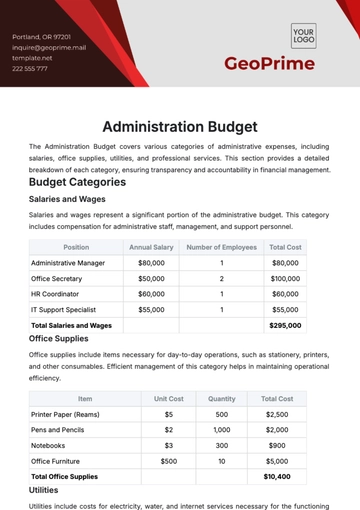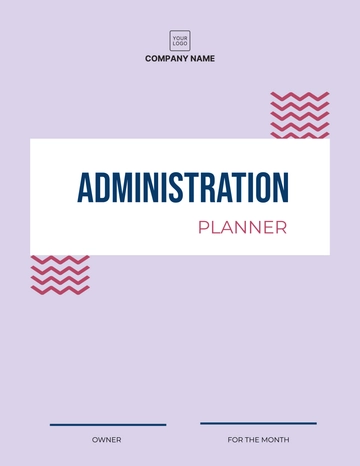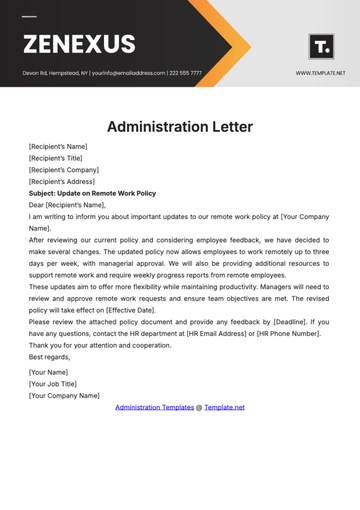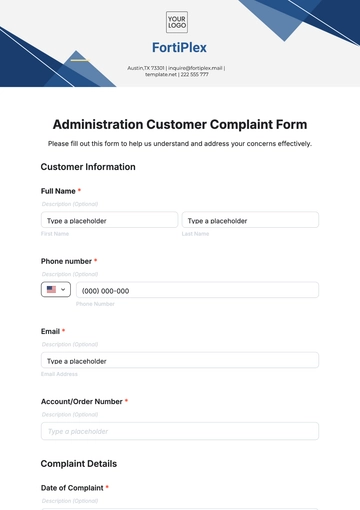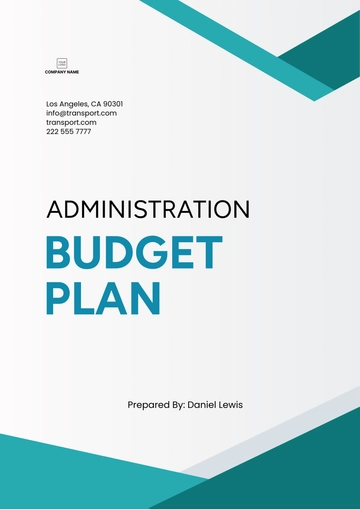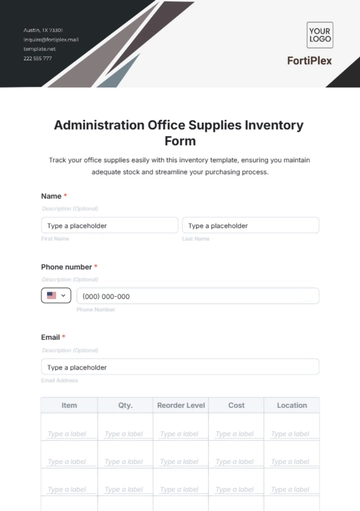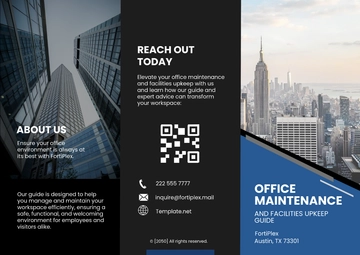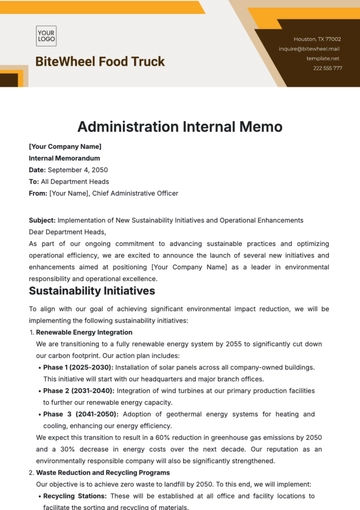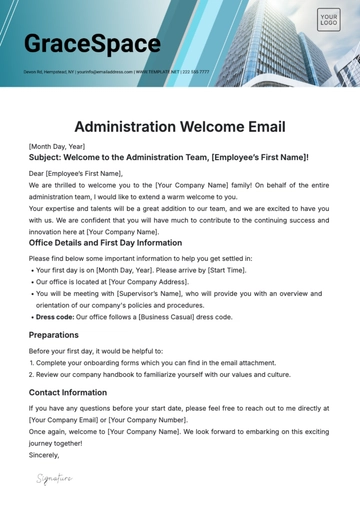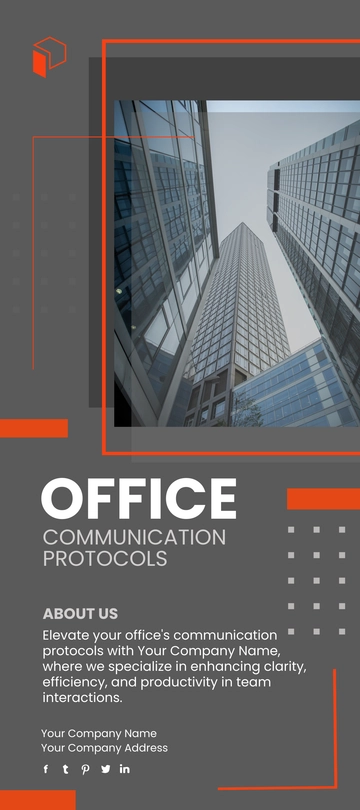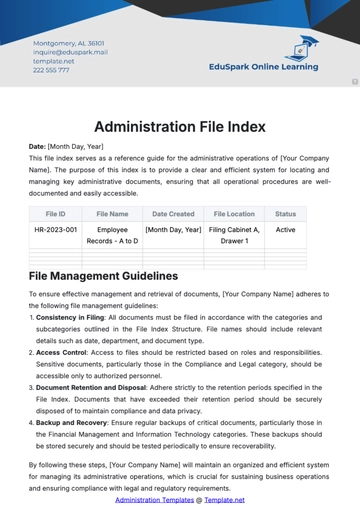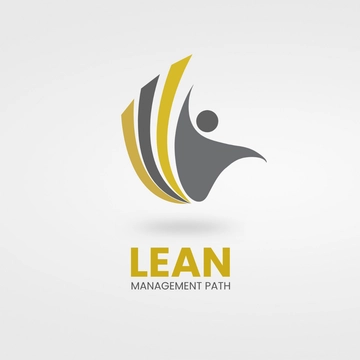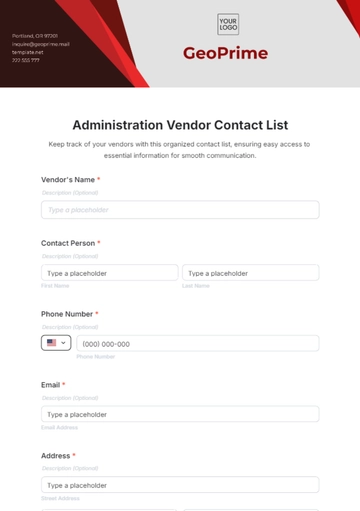Free Administration Strategic Office Space Planning Guide

Introduction
Strategic office space planning is a critical aspect of organizational management that significantly impacts productivity, employee satisfaction, and operational efficiency. For [Your Company Name], a well-orchestrated office space planning strategy is indispensable to foster an environment conducive to innovation, collaboration, and growth. This guide aims to outline the key principles, methodologies, and steps involved in effective administration strategic office space planning, tailored for [Your Company Name].
Key Principles of Office Space Planning
The effective planning and utilization of office space are critical components of [Your Company Name]'s strategic management. A well-designed office not only enhances productivity but also fosters a positive work environment that reflects the company's values and objectives. Below are the key principles that guide our approach to office space planning, ensuring that our workspace is both functional and inspiring.
Flexibility and Scalability: Our office space is designed to be flexible, allowing for easy reconfigurations to accommodate team expansions, project-based work, and the introduction of new technologies. Scalability is crucial to adapt to the company's growth and evolving needs without extensive redesigns.
Collaboration and Privacy Balance: We strive to strike a balance between open areas that foster collaboration and private spaces that allow for focused work. This principle ensures that employees have access to the environment they need to be most productive, whether it involves teamwork or individual tasks.
Technology Integration: Our office space planning incorporates the seamless integration of technology. This includes providing ample power sources, high-speed internet connectivity, and smart office solutions to enhance efficiency and facilitate a flexible work environment.
Health and Wellbeing: Recognizing the importance of employee health and wellbeing, our office design includes ergonomic furniture, natural lighting, green spaces, and recreational areas. These elements contribute to a healthier workplace, reducing stress and promoting physical and mental wellbeing.
Brand Identity and Culture: The office space is a physical representation of [Your Company Name]'s brand and culture. Through design elements, color schemes, and spatial organization, our office reflects the company's values, mission, and the image we wish to project to both employees and visitors.
Sustainability: Environmental responsibility is a core principle of our office space planning. We prioritize sustainable materials, energy-efficient lighting, and waste reduction practices to minimize our ecological footprint and promote a greener workplace.
Acoustic Planning: Proper acoustic planning ensures that noise levels are managed to reduce distractions and enhance productivity. This includes the strategic placement of sound-absorbing materials, private call areas, and designated quiet zones.
Space Utilization and Efficiency: Maximizing the use of available space is essential for cost efficiency and productivity. This involves thoughtful planning to ensure that every square foot serves a purpose, whether for workstations, meeting areas, or leisure spaces.
These principles are foundational to creating an office environment that not only meets the functional requirements of our work but also enhances the overall experience for our employees. Through strategic office space planning, [Your Company Name] aims to create a workspace that is conducive to innovation, collaboration, and sustained growth.
Office Space Planning Principles Overview:
Principle | Description |
|---|---|
Flexibility and Scalability | Ensures office layout can adapt to growth and change without significant disruptions. |
This table encapsulates the core principles guiding [Your Company Name]'s approach to office space planning, ensuring a workspace that not only meets today's needs but is also prepared for the challenges and opportunities of the future.
Planning Process
The planning process for office space at [Your Company Name] is a comprehensive and methodical approach designed to ensure that our workspace not only meets the current needs of our employees and operations but also anticipates future requirements. This process involves several critical stages, each contributing to the creation of a functional, efficient, and inspiring office environment.
Needs Assessment: The initial phase involves a thorough assessment of our current and future needs. This includes understanding the nature of our work, the number of employees, technological requirements, and any specific needs that different departments may have. The assessment also considers projected growth to ensure that the space can accommodate future expansions.
Strategic Planning: Based on the needs assessment, a strategic plan is developed outlining the objectives for the office space. This plan sets the direction for the design process, including space allocation, the balance between collaborative and private work areas, and the integration of technology. It also addresses health and wellbeing, sustainability, and the reflection of our brand identity.
Design and Layout: With a strategic plan in place, the design phase commences. This involves creating a detailed layout that optimizes the use of space, promotes efficient workflow, and incorporates the principles of flexibility, collaboration, and privacy. The design phase also focuses on ergonomic considerations and the aesthetic representation of the company’s brand.
Technology and Infrastructure Planning: Integral to the design is the planning for technology and infrastructure. This ensures that the office is equipped with the necessary IT infrastructure, power sources, and connectivity to support current and future technological needs.
Furniture and Equipment Selection: Selecting the right furniture and equipment is crucial for ergonomics, functionality, and comfort. This stage involves choosing pieces that support the health and productivity of employees while also being in line with the company’s sustainability goals.
Implementation and Execution: With the plan and design in place, the next step is the implementation phase. This involves the physical arrangement of the office space, installation of technology and infrastructure, and placement of furniture and equipment.
Feedback and Evaluation: After the office space is in use, an important final step is to gather feedback from employees and evaluate the effectiveness of the planning process. This includes assessing how well the space meets the needs of the workforce, identifying any areas for improvement, and making adjustments as necessary.
Continuous Improvement: Office space planning is an ongoing process. Based on feedback and evaluation, [Your Company Name] commits to continuous improvement, ensuring that our workspace remains adaptable, efficient, and aligned with our strategic objectives.
This process ensures that [Your Company Name]'s office space is thoughtfully planned and designed to meet our evolving needs, reflecting our commitment to providing a workspace that fosters innovation, collaboration, and well-being.
Best Practices
The success of [Your Company Name] in creating an effective and inspiring workspace relies on adhering to established best practices in office space planning. These practices are designed to optimize the functionality, aesthetics, and overall environment of our office space, ensuring it supports our strategic objectives and enhances employee well-being. Below, we detail the best practices that guide our approach to office space planning.
Engage Stakeholders Early: Involving key stakeholders, including department heads, IT personnel, and employees, early in the planning process ensures that the office space meets the diverse needs and preferences of all parts of the organization. This collaborative approach helps identify specific requirements and fosters a sense of ownership and satisfaction among employees.
Prioritize Flexibility: Designing spaces that are easily reconfigurable allows [Your Company Name] to adapt to changing business needs, technological advancements, and workforce dynamics without significant disruptions. Modular furniture, movable partitions, and adaptable workstations are examples of how flexibility can be integrated into the office layout.
Incorporate Nature and Natural Light: Access to natural light and green spaces has been shown to improve employee morale, health, and productivity. Designing the office layout to maximize natural light exposure and incorporating plant life and green areas can create a more pleasant and healthful work environment.
Ensure Adequate Space Allocation: Efficient use of space is critical. This involves careful planning to allocate the right amount of space for different functions, such as workstations, meeting rooms, and relaxation areas, ensuring that the office does not feel overcrowded or underutilized.
Adopt Ergonomic Design Principles: Investing in ergonomic furniture and designing spaces that promote good posture and comfort can significantly reduce the risk of work-related injuries and enhance employee productivity and satisfaction.
Integrate Technology Thoughtfully: The office space should seamlessly accommodate current and future technological needs. This includes providing sufficient power outlets, high-speed internet access, wireless charging stations, and areas designed for video conferencing to support hybrid work models.
Emphasize Brand Identity and Culture: The office design should reflect the company’s brand identity and culture, creating a space that embodies the organization's values and mission. This can be achieved through the strategic use of colors, logos, and design elements that resonate with the company's image.
Consider Acoustics: Effective acoustic planning is essential to minimize noise distractions and create a productive work environment. This may involve using sound-absorbing materials, creating designated quiet zones, and ensuring that noisy equipment is appropriately placed.
Plan for Health and Safety: The layout should facilitate good health and safety practices, including ergonomic workstations, sufficient circulation space, and access to first aid and emergency exits. Additionally, considering the current global health landscape, designing for social distancing and incorporating hygienic facilities has become increasingly important.
Solicit Feedback and Iterate: After implementing a new office layout, it is crucial to solicit feedback from employees and make necessary adjustments. This iterative process ensures that the office space continues to meet the needs and preferences of the workforce.
By adhering to these best practices, [Your Company Name] ensures that its office space planning efforts result in a workspace that is not only efficient and functional but also a source of inspiration and satisfaction for all employees.
Sustainability and Environmental Consideration
In our commitment to sustainability and environmental stewardship, [Your Company Name] integrates green practices into every aspect of our office space planning. This dedication not only reflects our responsibility to the planet but also enhances the well-being of our employees and supports long-term operational efficiency. Below are the core strategies and initiatives that embody our approach to sustainable office space planning.
Energy Efficiency: We prioritize the use of energy-efficient lighting, HVAC systems, and appliances to reduce our carbon footprint and lower operational costs. Smart lighting systems, which adjust based on occupancy and natural light levels, and programmable thermostats contribute significantly to energy conservation.
Sustainable Materials: Whenever possible, [Your Company Name] opts for sustainable, recycled, or responsibly sourced materials for office furniture, fixtures, and construction. This includes using recycled steel, bamboo, certified sustainable wood, and low-VOC (volatile organic compounds) paints and adhesives.
Waste Reduction and Recycling Programs: A comprehensive recycling program is in place to manage waste generated from office operations. This includes paper, plastics, electronics, and composting of organic waste. Additionally, we encourage digital documentation to minimize paper use.
Water Conservation: Water-saving fixtures and appliances are installed throughout the office to minimize water usage. These include low-flow faucets, dual-flush toilets, and water-efficient landscaping practices for outdoor areas.
Indoor Air Quality: Maintaining high indoor air quality is crucial for employee health. Our office space planning includes the use of air-purifying plants, advanced HVAC filters, and regular maintenance schedules to ensure clean air circulation.
Green Certifications: [Your Company Name] aims for certifications such as LEED (Leadership in Energy and Environmental Design) or WELL, which demonstrate our commitment to sustainable building practices and wellness.
Employee Engagement and Education: We actively engage employees in our sustainability efforts through education, incentives for green commuting, and participation in environmental initiatives. This fosters a culture of sustainability within the organization.
Sustainable Transportation: Supporting sustainable transportation options, such as bike storage, electric vehicle charging stations, and incentives for carpooling and public transport use, reduces the environmental impact of commuting.
By integrating these principles into our office space planning, [Your Company Name] not only contributes to environmental conservation but also promotes a healthier, more sustainable workplace for our employees.
Sustainability Initiatives and Their Impact:
Initiative | Implementation | Impact |
|---|---|---|
Energy Efficiency | Smart lighting, programmable thermostats | Reduces energy consumption and operational costs |
Through these initiatives, [Your Company Name] is dedicated to creating an office environment that not only meets the highest standards of sustainability but also inspires other organizations to adopt similar practices for the betterment of our planet and future generations.
Leveraging Technology for Office Space Utilization
In the digital age, [Your Company Name] recognizes the transformative impact of technology on office space planning and utilization. The strategic integration of advanced technologies enables us to optimize our workspace, improve employee experiences, and streamline operations. This section outlines the key technological strategies employed by our company to create a dynamic and efficient office environment.
Smart Office Systems:
The adoption of smart office solutions, such as IoT (Internet of Things) sensors and AI-powered analytics, allows for real-time monitoring and management of office spaces. These systems can track occupancy levels, environmental conditions, and resource usage, providing data-driven insights to inform decision-making and space optimization.
Collaborative Tools and Platforms:
To support a hybrid workforce, [Your Company Name] invests in state-of-the-art collaborative tools that enable seamless communication and cooperation, regardless of physical location. Virtual meeting software, cloud computing services, and project management platforms ensure that team members can work effectively, fostering a connected and productive workplace.
Automated Facilities Management:
Leveraging automation in facilities management helps in the efficient operation of our office spaces. Automated maintenance schedules, energy management systems, and security protocols reduce manual oversight and enhance the operational efficiency and safety of our work environment.
Personalized Workspace Solutions:
Technology enables the personalization of workspaces to meet individual needs and preferences. Employees can adjust lighting, temperature, and even desk height through apps or voice commands, promoting comfort and well-being.
Digital Wayfinding and Space Booking Systems:
To facilitate the flexible use of office spaces, digital wayfinding and booking systems allow employees to easily find and reserve workspaces, meeting rooms, and other resources. This technology supports a dynamic use of the office, accommodating fluctuating occupancy and activity levels.
Enhanced Security Measures:
Advanced security technologies, including biometric access controls and surveillance systems, ensure the safety and security of both employees and company assets. These measures are seamlessly integrated into the office environment, providing peace of mind without intruding on the workplace experience.
By harnessing these technologies, [Your Company Name] creates an office environment that is not only efficient and adaptable but also conducive to innovation and collaboration. Our commitment to leveraging technology in office space planning underscores our dedication to being at the forefront of workplace evolution, ensuring our company remains a competitive and desirable place to work.
Conclusion
Effective strategic office space planning is a dynamic, ongoing process that requires careful consideration of current needs, future growth, and the ever-evolving nature of work. For [Your Company Name], following the outlined guide ensures that the office environment not only meets functional requirements but also enhances employee well-being, productivity, and organizational culture. By adhering to the principles and processes detailed in this guide, [Your Company Name] can create a workspace that is not only efficient and sustainable but also a foundation for innovation and success.
- 100% Customizable, free editor
- Access 1 Million+ Templates, photo’s & graphics
- Download or share as a template
- Click and replace photos, graphics, text, backgrounds
- Resize, crop, AI write & more
- Access advanced editor
Revolutionize your office layout with the Administration Strategic Office Space Planning Guide Template from Template.net. This guide provides a strategic framework for optimizing office space and enhancing productivity. Fully editable and customizable, it offers the flexibility to tailor your space planning needs and is seamlessly adjustable in our Ai Editor Tool.


